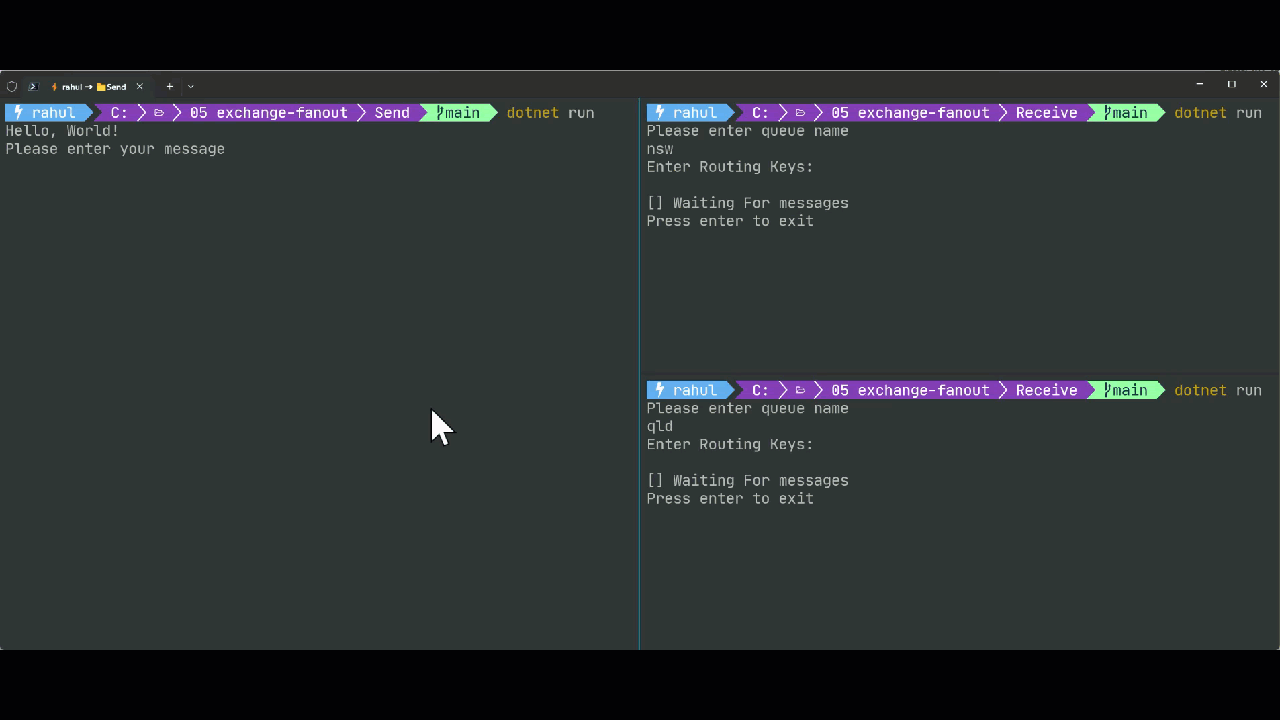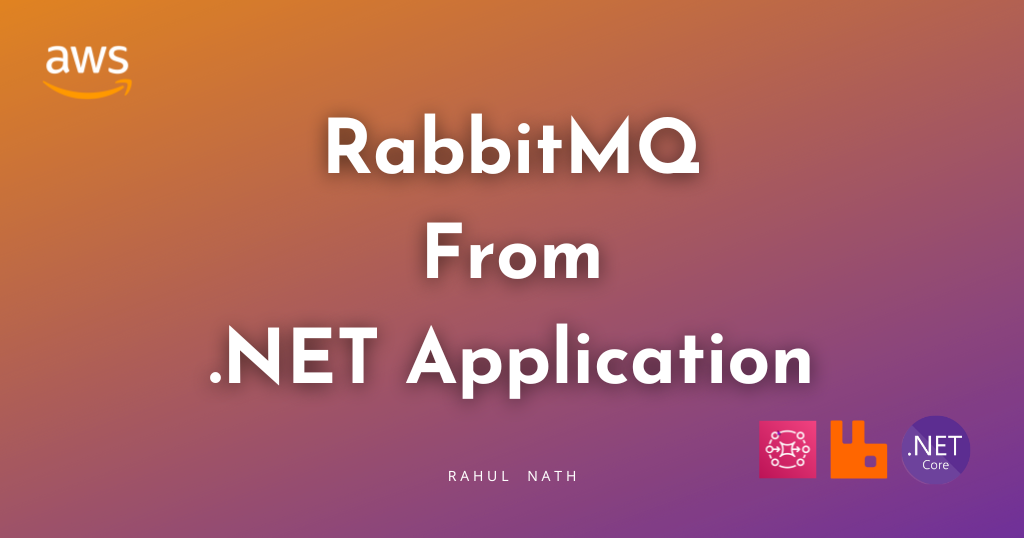

RabbitMQ Fanout Exchange Explained
source link: https://www.rahulpnath.com/blog/fanout-exchange-rabbitmq-dotnet/
Go to the source link to view the article. You can view the picture content, updated content and better typesetting reading experience. If the link is broken, please click the button below to view the snapshot at that time.
RabbitMQ Fanout Exchange Explained
A Fanout Exchange type in RabbitMQ routes messages to all of the queues bound to it, ignoring the routing key. Let's understand how to set up a Fanout Exchange and how it routes messages to consumers.
An Exchange in RabbitMQ is a routing mechanism to send messages to queues.
RabbitMQ supports four different Exchange Types.
In this blog post, let's understand
- RabbitMQ Fanout Exchange
- Routing messages in Fanout Exchange
- Set up a Fanout Exchange from .NET app
I use Amazon MQ, a managed message broker service that supports ActiveMQ and RabbitMQ engine types, to host my RabbitMQ instance. However, you can use one of the various options that RabbitMQ provides to host your instance,
AWS sponsors this article and is part of my RabbitMQ Series.
What is a RabbitMQ Fanout Exchange?
A Fanout Exchange type in RabbitMQ routes messages to all the queues bound to it, ignoring the routing key.
When a new message is published to a Fanout exchange, a copy is delivered to all the queues bound to it.
Fanout exchanges are ideal for broadcasting messages.

Fanout Exchange routes messages to all queues bound to it. It ignores the routing keys on the messages and the Binding if any are specified.
Fanout exchange ignores the routing keys on the messages and any Binding keys if specified.
RabbitMQ Fanout Exchange From .NET
We will use a NuGet package, RabbitMQ.Client, to connect and send/receive messages from RabbitMQ.
If you are new to building RabbitMQ from .NET applications, check out the Getting Started article below.
Creating RabbitMQ Fanout Exchange From .NET
Exchanges are created using the Channel.
The ExchangeDeclare the method takes in an exchange name and its type. Below is an example of creating a RabbitMQ Fanout Exchange in .NET.
var factory = new ConnectionFactory()
{
Uri = new Uri("YOUR RABBIT INSTANCE URI"),
Port = 5671,
UserName = "<USERNAME FROM CONFIGURATION FILE>",
Password = "<PASSWORD FROM CONFIGURATION FILE>"
};
using var connection = factory.CreateConnection();
using var channel = connection.CreateModel();
var exchangeName = "weather_fanout";
channel.ExchangeDeclare(exchangeName, ExchangeType.Fanout);When sending a message, the sender specifies the Exchange and routing key.
channel.BasicPublish(exchangeName, routingKey, null, body);When sending to a Fanout Exchange, the routingKey can be empty as the exchange ignores it.
Set up Binding on Fanout Exchange From .NET
Messages are routed to Queues from Exchanges using the Binding information.
To create a Queue, use the QueueDeclare method. It will create a new Queue only if one doesn't exist with the same name.
var factory = new ConnectionFactory()
{
Uri = new Uri("YOUR RABBIT INSTANCE URI"),
Port = 5671,
UserName = "<USERNAME FROM CONFIGURATION FILE>",
Password = "<PASSWORD FROM CONFIGURATION FILE>"
};
using var connection = factory.CreateConnection();
using var channel = connection.CreateModel();
var queueName = "nsw";
channel.QueueDeclare(queueName, false, false, false, null);
channel.QueueBind(queueName, "weather_fanout", string.Empty);The above code sets up a queue nsw and sets up a binding with the Fanout exchange (weather_fanout) we created earlier.
You can create multiple queues and bind with the same exchange, if multiple consumers are interested in the messages coming to the Exchange.

Fanout Exchange in AWS MQ RabbitMQ console showing the two queues and the bindings.
For example, In this case, the weather_fanout exchange can be used to broadcast critical weather alerts, and all consumers are interested in it. To register other Queues, we can repeat the queue declaration and binding.
var queueName = "qld";
channel.QueueDeclare(queueName, false, false, false, null);
channel.QueueBind(queueName, "weather_fanout", string.Empty);Any time a message is sent to the Exchange, a copy of it is sent to both qld and nsw Queues and the consumers listening on those queues can process the messages.

RabbitMQ Fanout exchange sending messages to all bounded queues.
Recommend
About Joyk
Aggregate valuable and interesting links.
Joyk means Joy of geeK
 Rahul NathRahul Pulikkot Nath
Rahul NathRahul Pulikkot Nath